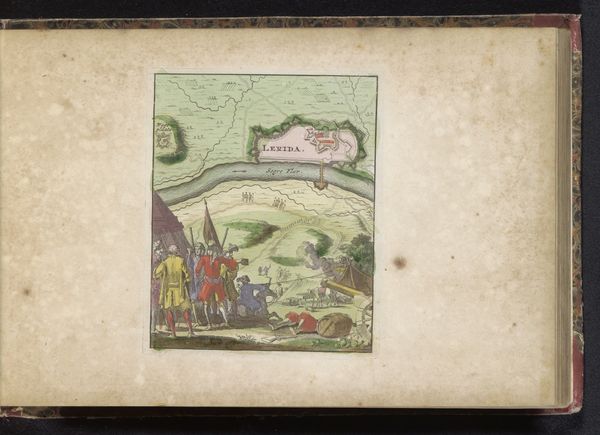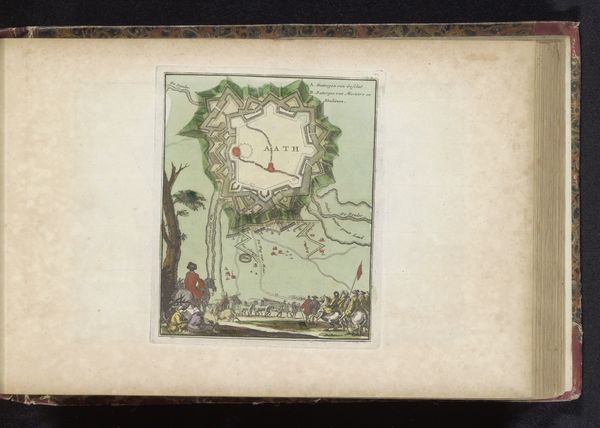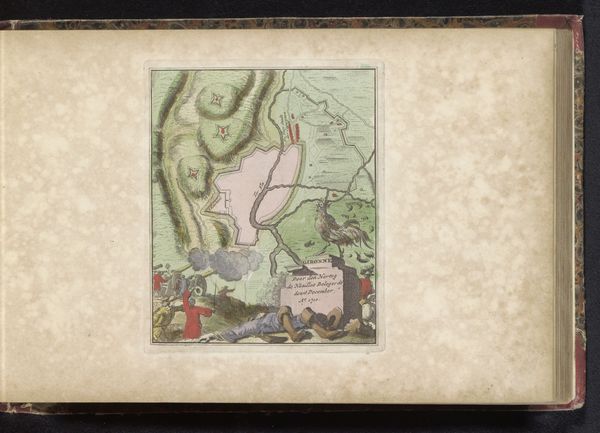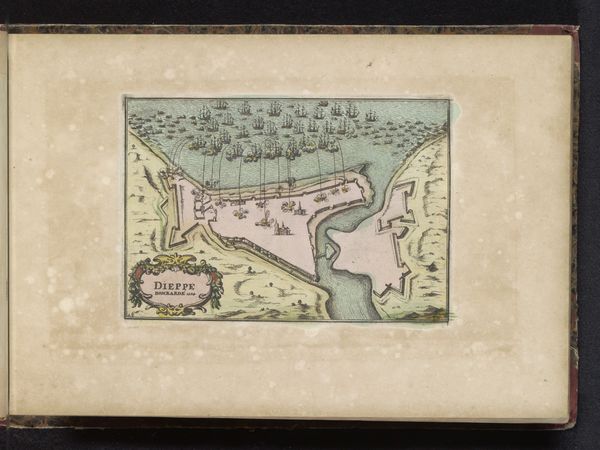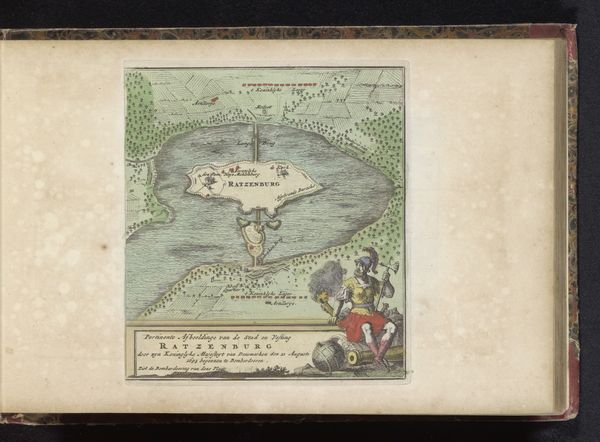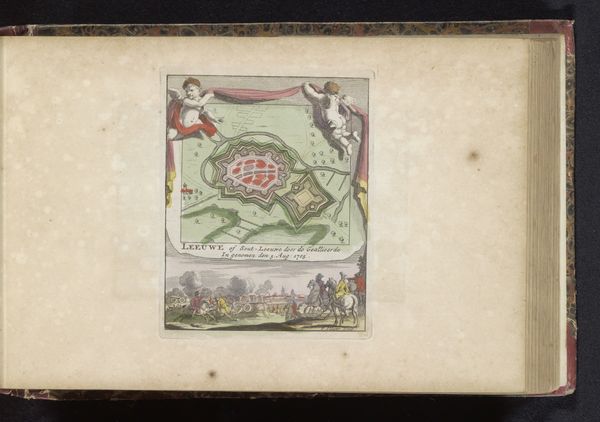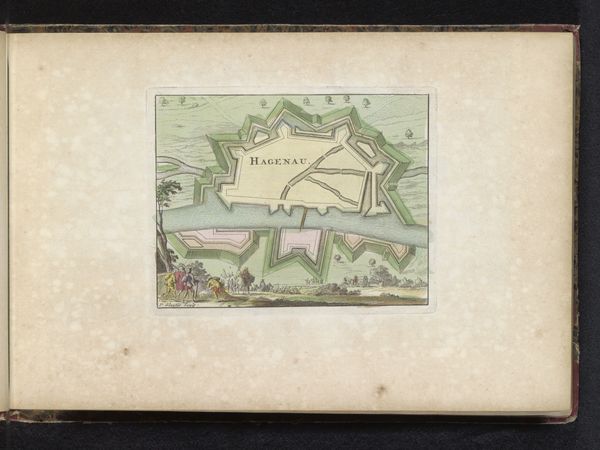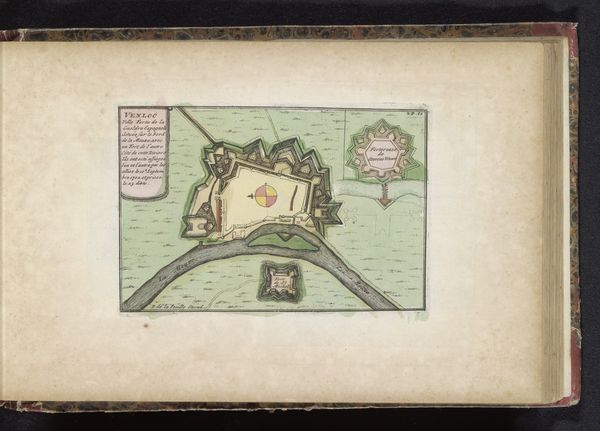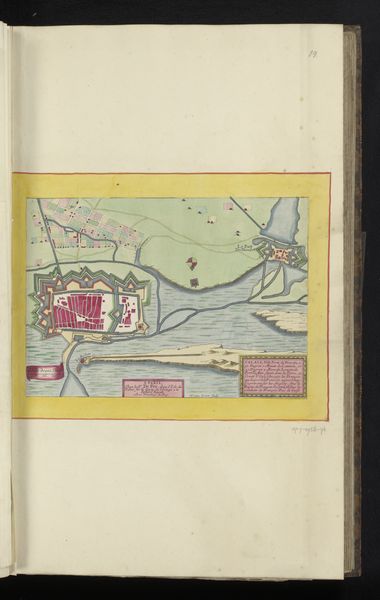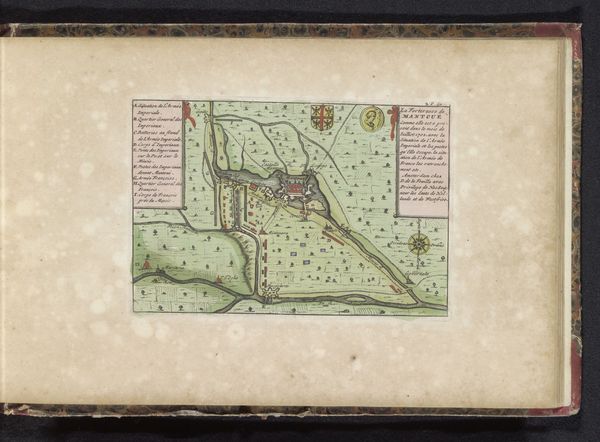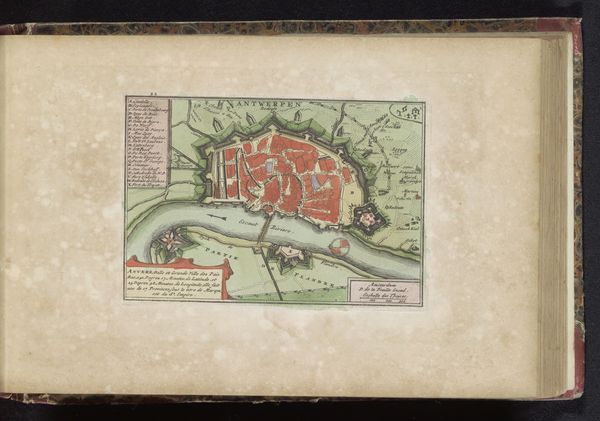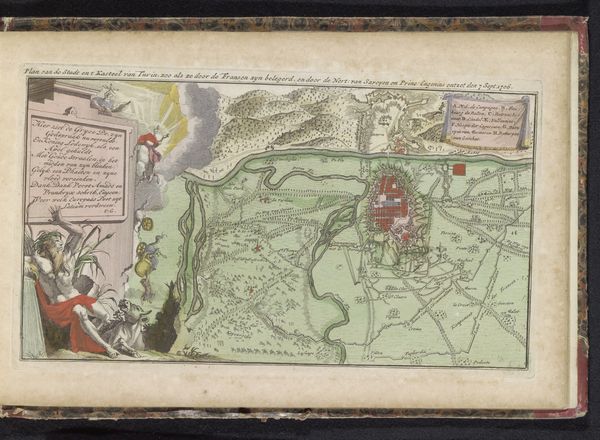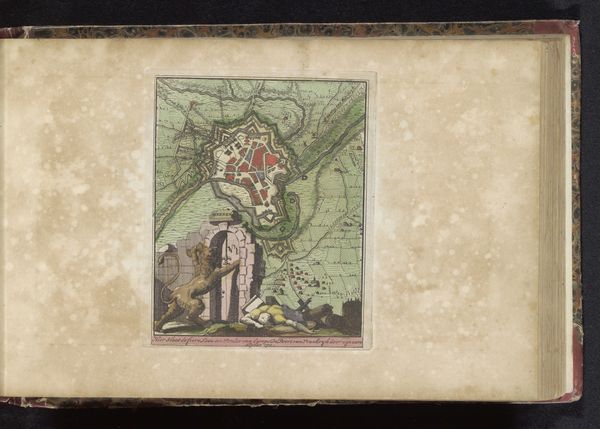
painting, print, watercolor
#
painting
# print
#
landscape
#
watercolor
#
cityscape
#
history-painting
Dimensions: height 151 mm, width 125 mm
Copyright: Rijks Museum: Open Domain
Curator: The scene is alive with miniature detail. There's almost an absurd quaintness in illustrating violence with such delicate application of pigment. Editor: This is "Gevechten bij Toulon, 1707," an anonymous watercolor painting and print dating to 1735, offering us a cityscape that seems deceptively calm given its turbulent subject. What do you notice? Curator: Immediately, it is the composition; the structure is striking. The bay itself cradles all the activities like some sort of inverted theater. The muted greens and blues are deceptive in their serenity, only belied by tiny crimson flags and plumes of smoke. The scale seems almost… play-like. Editor: Indeed. The "play-like" aspect might connect to the function of these images at the time. Consider, this piece was made nearly thirty years after the actual events at Toulon, during a period where the memory and myth of warfare were politically vital to maintain Dutch national identity. It transforms violent struggle into a consumable, even picturesque scene. Curator: I see it too, yes. Observe the spatial relationships. Toulon is defined by land, not water. How are we invited to look beyond battle here? The eye follows the coastline, the ships guide us inland. Editor: Yes, and the mountains behind the city almost serve as a backdrop, flattening the perspective and further highlighting this element of staged drama. I’m thinking about who the audience was for prints and paintings like this, in homes. It provided a distant engagement. What are your feelings regarding such ‘sanitized’ violent images? Curator: The contrast between violence and order… fascinating. The almost mathematical distribution of ships, plumes and the unwavering gaze of the cherubic figures framing it all seems to drain the image of its drama in favor of compositional perfection. Yet that perfection underscores a chilling ambivalence toward the real human drama it depicts. Editor: I agree. These conflicting tensions make it such a potent artifact. By acknowledging and questioning that initial sense of pictorial pleasantness, we begin to uncover complex societal and ideological narratives, don't you agree?
Comments
No comments
Be the first to comment and join the conversation on the ultimate creative platform.

